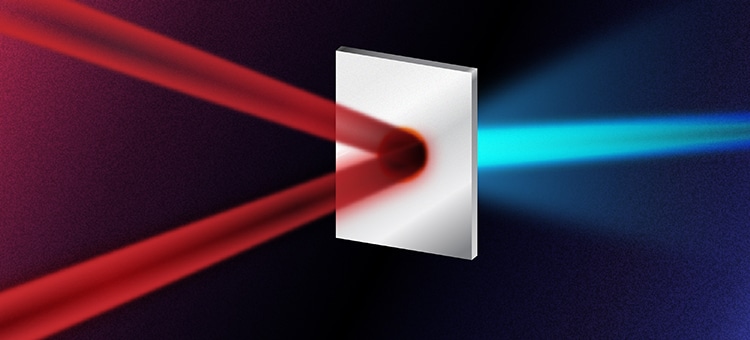May 27 2019
Scientists from Sweden’s Chalmers University of Technology and the University of Gothenburg demonstrate a new technique that can improve the energy of a proton beam generated by laser-based particle accelerators by two times.
 Image credit: Yen Strandqvist
Image credit: Yen Strandqvist
The innovation could produce more compact, less expensive equipment that could be helpful for several applications, such as proton therapy.
In proton therapy, a beam of accelerated protons is fired at cancerous tumors, destroying them through irradiation. However, the equipment required is very hefty and expensive that it is only available in a few places around the world.
The state-of-the-art high-powered lasers provide the ability to decrease the equipment’s size and cost, since they can accelerate particles over a much shorter distance when compared to conventional accelerators, decreasing the distance needed from kilometers to meters. The hindrance is that despite attempts from scientists worldwide, the existing laser-generated proton beams are not adequately energetic. However, the Swedish scientists now present a new technique that yields a doubling of the energy—a significant step forward.
In the standard approach, a laser pulse is fired at a thin metallic foil, with the interaction producing a beam of highly charged protons. On the contrary, the new technique involves first dividing the laser into two less intense pulses, prior to firing both at the foil from two different angles at the same time. When the two pulses strike the foil, the resultant electromagnetic fields heat the foil very efficiently. The method leads to higher energy protons while using the same initial laser energy as the standard method.
This has worked even better than we dared hope. The aim is to reach the energy levels that are actually used in proton therapy today. In the future, it might then be possible to build more compact equipment, just a tenth of the current size so that a normal hospital could be able to offer their patients proton therapy.
Julien Ferri, Researcher, Department of Physics, Chalmers University of Technology
Ferri is also one of the scientists behind the discovery.
The distinctive benefit of proton therapy is its precision in targeting cancer cells, destroying them without damaging healthy cells or neighboring organs. The technique is thus vital for treating deep-seated tumors, situated in the spine or brain, for instance. With the higher energy possessed by the proton beam, it can penetrate further into the body to combat cancer cells.
While the feat of scientists in doubling the energy of the proton beams denotes a big breakthrough, the end objective is still a long way off.
We need to achieve up to 10 times the current energy levels to really target deeper into the body. One of my ambitions is to help more people get access to proton therapy. Maybe that lies 30 years in the future, but every step forward is important.
Tünde Fülöp, Professor, Department of Physics, Chalmers University of Technology
In addition to being valuable for cancer treatment, accelerated protons can be used to study and analyze various materials, and also make radioactive material less injurious. Moreover, they are vital to the space industry. Energetic protons make up a huge part of cosmic radiation, which damages satellites and other space equipment. By generating energetic protons in the lab, researchers are able to investigate how such damage takes place and to create new materials that can better endure the stresses of space travel.
In collaboration with research colleague Evangelos Siminos at the University of Gothenburg, Chalmers scientists Julian Ferri and Tünde Fülöp employed numerical simulations to demonstrate the feasibility of the technique. Their next step is to carry out experiments together with Lund University.
“We are now looking at several ways to further increase the energy level in the proton beams. Imagine focusing all the sunlight hitting the Earth at a given moment onto a single grain of sand—that would still be less than the intensity of the laser beams that we are working with. The challenge is to deliver even more of the laser energy to the protons,” reports Tünde Fülöp.
The new scientific outcomes have been reported in the renowned journal Communications Physics, part of the Nature family.